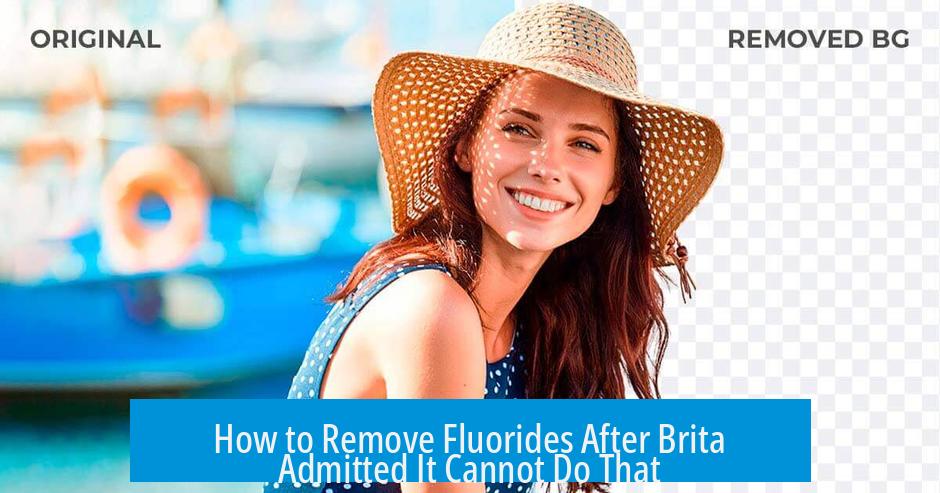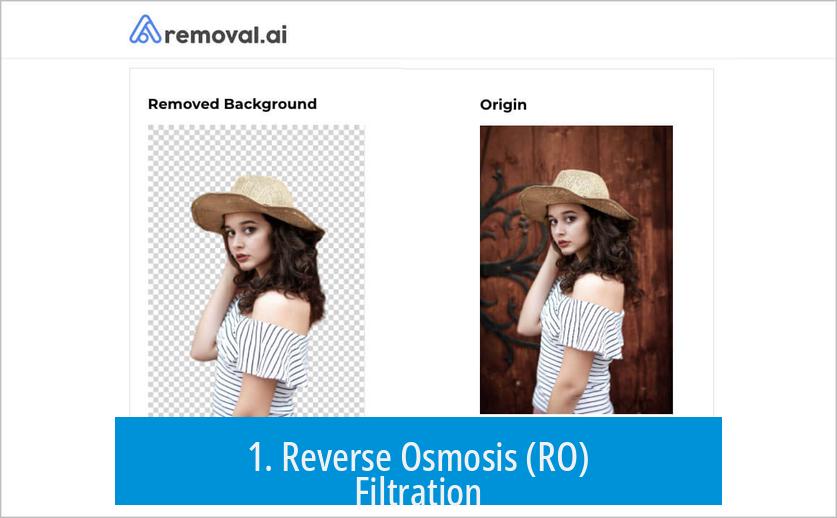How to Remove Fluorides After Brita Admitted It Cannot Do That

Brita water filters do not remove fluoride from tap water. To eliminate fluoride, alternative filtration methods such as reverse osmosis, activated alumina, bone char filtration, or distillation are necessary.
Brita Filters and Fluoride Removal Capabilities
Brita filters are popular for improving taste and reducing chlorine and heavy metals. However, they are not designed to filter out fluoride. The company openly states that their filters maintain a healthy level of fluoride instead of removing it. This is because fluoride is intentionally added in many municipal water supplies to promote dental health.
Consumers who seek to avoid fluoride cannot rely on Brita filters. Fluoride ions pass through Brita cartridges since their filtration media do not effectively capture them. Furthermore, boiling water is ineffective because it does not remove fluoride and may increase its concentration by evaporation of the water volume.
Effective Methods to Remove Fluoride from Water
To reduce or remove fluoride from drinking water, specific technologies capable of targeting these ions must be employed. Below are the most effective and commonly used options.
1. Reverse Osmosis (RO) Filtration

- RO systems use a semi-permeable membrane to separate contaminants from water.
- They can reduce fluoride concentrations by approximately 95% or more.
- The membrane blocks fluoride ions and other solutes while allowing water molecules to pass.
- RO units are available for home use but tend to be more expensive than typical pitcher filters.
RO is the most reliable method for removing fluoride. For those extremely concerned about fluoride content, investing in an RO filter is advisable.
2. Activated Alumina Filtration
- Powered by porous activated alumina, this method adsorbs fluoride ions from water.
- The high surface area of alumina effectively binds fluoride.
- Filters with activated alumina are widely used in regions where fluoride contamination is high.
- This filtration requires certain water pH ranges and regular cartridge replacement to remain effective.
3. Bone Char Filtration
- Bone char, made from charred animal bones, contains tricalcium phosphate.
- This material selectively captures fluoride and metal ions from water.
- It is an older but still effective technique, especially for communities with naturally high fluoride levels.
4. Distillation

- Water distillation involves boiling water and collecting the condensed vapor.
- Fluoride, being non-volatile, remains in the boiling chamber, reducing fluoride levels in the distilled water.
- Distillers are typically affordable home appliances.
- This method is slower and consumes more energy but is effective at removing fluoride.
General Advice and Recommendations
If fluoride presence is a concern, checking local water quality reports can provide insights into fluoride levels.
Many water utilities add fluoride at concentrations around 0.7 mg/L but some natural sources may exceed this.
When fluoride levels are above 1.5 mg/L, treatment is advisable before consumption due to potential health risks.
In cases where installing advanced filtration is inconvenient, purchasing bottled water is an alternative option. Bottled water labels often specify if fluoride is present or removed, allowing informed choices.
Safety and Health Considerations Regarding Fluoride
Fluoride is generally added to water to prevent tooth decay. However, excessive fluoride may cause dental fluorosis and other health concerns.
Recent studies have linked high fluoride exposure in children to lowered IQ scores, heightening public caution.
Water fluoridation levels below 7 parts per million are difficult to reduce further, but typical municipal levels are much lower, usually deemed safe.
Natural calcium in the body bonds with fluoride, storing it in bones and teeth or helping eliminate it via urine.
This natural process acts as a biological filter. Nonetheless, those wary of fluoride intake may consider fluoride-free water sources.
Summary: Key Takeaways on Removing Fluoride from Water

- Brita filters do not remove fluoride; they retain it to maintain dental health benefits.
- Reverse osmosis systems are the most effective at reducing fluoride, removing up to 95% or more.
- Activated alumina and bone char filtration are reliable alternative methods for fluoride removal.
- Distillation effectively removes fluoride but requires energy and time.
- Boiling water does not eliminate fluoride; it may concentrate it.
- Checking local water fluoridation status helps decide on the need for filtration.
- Where filtration is impractical, fluoride-free bottled water is an accessible option.
How to Remove Fluorides After Brita Admits It Can’t Do That?
Here’s the reality right off the bat: Brita filters do not remove fluoride from water. That’s right — if you were counting on your trusty Brita pitcher to zap that fluoride away, it’s time for a rethink. But why doesn’t Brita take fluoride out, and what are the better ways to do it? Let’s dive deep and get you the facts with a twist of fun.
So, you’ve heard the whispers that fluoride in your tap water might be a concern. The CDC even noted kids exposed to water with fluoride at about 1.5 mg/L could face lower IQs. Yikes! Fluoride is a known neurotoxin, after all. Yet, fluoride also strengthens teeth by bonding with calcium in your body—nature has a weird way of balancing things. Your body acts like a filter itself, happily tucking fluoride into bones or flushing the extra out.
Why Isn’t Brita Removing Fluoride?
Here’s the bitter pill: Brita filters weren’t made to get rid of fluoride. They mainly target chlorine, some heavy metals, and other nasty tastes and odors. Brita even says their filters “keep a healthy level of fluoride.” They don’t add it, but they definitely don’t remove it either.
Boiling your water? Nope, that doesn’t help either. In fact, it can make fluoride concentration worse by evaporating water but leaving fluoride behind. So your grandma’s old trick won’t cut it here.
Effective Ways to Kick Fluoride Out
If you want to be fluoride-free, here are your best buddies:
- Reverse Osmosis (RO) Filtration: The superhero of fluoride removal. RO systems use a special semi-permeable membrane to trap harmful contaminants and let only water molecules through. These babies can remove at least 95% of fluoride. Downsides? They cost more upfront and waste some water. But if fluoride scares you, it’s the gold standard.
- Activated Alumina Filters: Think of activated alumina as a sponge specially designed to suck fluoride ions out of your water. It’s porous with a huge surface area, catching fluoride in its trap. These filters are more budget-friendly than RO but need replacement and maintenance to stay effective.
- Bone Char Filtration: This involves filtering water through bone char—a type of charcoal made from animal bones which contains tricalcium phosphate. It bonds with fluoride and pulls it out. Not your everyday kitchen gadget, but an old-school natural option that works well in some parts of the world.
- Distillation: This is the “boil it, but smarter” method. Distillation boils water and then condenses the steam into a separate container, leaving contaminants behind. It’s quite effective at removing fluoride, but distillers take time and power. On the plus side, you can get a countertop distiller for a reasonable price.
Not So Simple: The Cost and Convenience Factor
We should be real here. RO systems? Expensive and bulky. Bone char filters? Not readily available everywhere. Activated alumina? Requires upkeep. Distillation? Time-consuming. If all this sounds like a hassle, the easiest thing might just be bottled water for drinking. Check those labels though, because some bottled waters have fluoride added too!
Also, it’s smart to peek at your local water report. Water suppliers often add fluoride for dental health or it may naturally occur. Knowing your water’s fluoride level helps decide if removal is necessary.
Does Fluoride Removal Always Make Sense?
Before you go all-in on expensive gear, consider this: fluoride is typically harmless at low levels — below 1.5 mg/L is considered safe. It’s tricky and costly to remove fluoride below 7 parts per million anyway. So, if your water’s fluoride is within limits, skipping a Proton pack-sized filter might be fine.
On the bright side, minerals like calcium in your body bond with fluoride and build stronger bones and teeth. Plus, your kidneys will flush out anything excess — you’re actually a living filter yourself!
Final Thought: What’s Your Move?
Brita is great for taste and chlorine but not for fluoride. If fluoride concerns you, best avoid relying on Brita alone. Invest in reverse osmosis or activated alumina systems if you want long-term peace of mind. Distillation offers a middle ground for affordability and fluoride removal. Or just pick bottled water labeled fluoride-free—convenient and fuss-free.
So, next time someone tells you their Brita got rid of fluoride, give ’em a knowing smile and share these facts. Because when it comes to fluoride removal, it’s a different filter game altogether.
Can Brita filters remove fluoride from water?
No, Brita filters are not designed to remove fluoride. They maintain fluoride at healthy levels but do not filter it out.
What methods effectively remove fluoride from tap water?
- Reverse osmosis filters with special membranes can remove about 95% of fluoride.
- Activated alumina filters attract and hold fluoride ions.
- Bone char filtration reduces fluoride using tricalcium phosphate.
- Distillation also removes fluoride but boiling does not.
Is boiling water a good way to get rid of fluoride?
No. Boiling water cannot remove fluoride. It may actually increase fluoride concentration.
Are there affordable options to remove fluoride if I don’t want to buy an expensive filter?
Water distillers offer a cheaper way to remove fluoride. Alternatively, bottled water can be bought if filtering is too costly.
How do I know fluoride levels in my tap water?
Check with your local water supplier. They can tell you if fluoride is naturally present or added to your tap water.





Leave a Comment